#research and references
Explore tagged Tumblr posts
Text
Hi! I'm Paddy Paddysol, your weird, wacky, and whimsical dumbass who is definitely not a silly borzoi in a trenchcoat pretending to be a human you gotta trust me!
I mainly dabble in mcyt spaces as an artist, most currently in the lifesteal and unstable universe communities.
COMMS: Open!
You may use my art as pfp/banners/edits with credit. (If you do use my art in an edit I would love to see it, feel free to send it my way!)
Please do not repost my art to this or other sites.
#intro post#paddy.art#paddy.rambles#research and references#im gonna need all of yall to pretend i made this intro post ages ago this is lowkey embarassing lmao
24 notes
·
View notes
Text
So you know when you're writing a scene where the hero is carrying an injured person and you realize you've never been in this situation and have no idea how accurate the method of transportation actually is?
Oh boy, do I have a valuable resource for you!
Here is a PDF of the best ways to carry people depending on the situation and how conscious the injured person needs to be for the carrying position.
Literally a life saver.
(No pun intended.)
#writing tips#writing resources#writing reference#writing research#idk i thought it was cool#superhero#dc fanfic#batman fanfic#bkdk fanfic#fanfic#fan fiction#bakudeku#bkdk#jaytim#this was all for a jaytim fic im writing#it's my first a/b/o smut fic ever#yeehaw#i had to google if there was any way to carry an unconscious person up a ladder alone#i don't think you can#mha fanfic#bnha fanfic#coldflash#jaydick#idk any superhero ship works#im done tagging shit
6K notes
·
View notes
Text

We're going on an ass kicking adventure.
[First] Prev <–-> Next
#poorly drawn mdzs#mdzs#wei wuxian#lan wangji#Yes indeed this is a reference to the classic 'Kirby's fucking pissed' meme. It felt fitting given the circumstances.#Wei Wuxian is nothing but a villain now. His name is but a booeyman and scapegoat for everything that goes wrong.#It is a cruel and unusual punishment to be Irrepairable to others. That no matter what you do - you are othered and unsalvageable.#While this situation deals with necromancy & war & politics...boy does it ever mirror how modern drama campaigns go.#I wonder if MXTX did that on purpose? Considering how SVSSS talks about the relationships between authors and their fans/work -#Its stands to reason that WWX story is indeed a parallel for how the public prefers black and white & sensationalist views of people.#People are heroes or villains and trying to think about the nuance is too much work.#And it does not matter what the truth or lies are. The rumour exists and so it must hold truth.#It feels like someone dropped a poorly researched callout post on WWX on twitter that went viral.#80% of the people don't even know who he is but are still leaving him death threats.#“Guys I know we all used to really love WWX's content but I heard he unethically sourced his bones for his last art installation...”#Okay actually he might indeed do unethical bone sourcing. I need to think longer on what the hyper-specific hobby drama might be.#And a huge shout out to LWJ who is right in the vicinity watching this happen in horror. *That* is a specially kind of torment too.
2K notes
·
View notes
Text



This is a huge breach of privacy but I spent three hours finding people standing in neutral positions and taking pictures of them without their consent!
#researchers#zooliminology#unreality#art#researcher pictures#i guess?#i am tagging this more so I can find it later#reference
2K notes
·
View notes
Text
Introducing the Star Wars Reference Wiki!
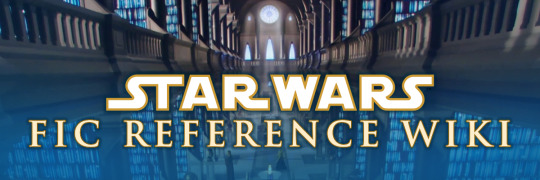
Introducing the Star Wars Fic Reference Wiki, a wiki for fic writers by fic writers!
The Star Wars Fic Reference Wiki is intended as a way for fic writers and other fanwork creators to easily look up pertinent information without having to slog through dense paragraphs or comb through categories with dozens or even hundreds of entries with few indicators of what the pages are. Do you want lists? Do you want tables? Do you want easily digestible bullet points? We've got 'em!
We build pages from common questions we or other fic writers have, such as:
All these fics incorporate events from Jedi Apprentice, but what really happened to Obi-Wan Kenobi in Legends?
How do the stories in Revenge of the Sith and The Clone Wars mesh together?
Which characters are LGBTQIA+? Who are some LGBTQIA+ creators who have worked on a Star War? How about a timeline of LGBTQIA+ people and content?
BBY/ABY, BrS/GrS, BFE/AFE... what's the difference between these and all those other calendars? What calendar do characters use before the Battle of Yavin?
What are some idioms or kriffing swears this character could use to sound more Star Wars-y?
Does the GFFA have its own version of a grilled cheese sandwich with tomato soup?
What could be used as a pack animal in one of the many, many deserts?
Why does this fic call him "Yan" or "Glamnor" Dooku? Is her full name Padmé Amidala Naberrie or something else?
How many costumes does Padmé wear? What about other SW costumes?
What are some canonical design options for a Kiffar OC's facial tattoo?
Are these the droids you're looking for?
Are you constantly losing those handy tumblr posts compiling useful resources? We have a permanent page for that!

(Swears in light mode; LGBTQIA+ characters in dark mode)
We've only recently started building the wiki, and are creating new pages all the time! We'd love help or suggestions for new pages. Have you never edited a wiki before? No problem! We have a tutorial for that. Are you not super confident about your English? No worries! Other wiki editors are here to help! We have a Discord server for the wiki, and side channels for things like SW fic recs and general fan chat.
Thank you for initial brainstorming and showing us there was an interest in and audience for this wiki, from us (facingthenorthwind and immithrax) to you: @nimata-beroya, @cacodaemonia, @elismor, @genericficerblog, @seth-shitposts, @takadasaiko, and @virusq!
Many hands make great wikis, so please, come on over and join us, and check back to see what new things we have in store! If you find our pages useful, we'd also love if you could spread the word, so other people can make use of the resources we've worked hard to create.
#star wars#star wars fandom#star wars fic reference wiki#star wars reference#fic research#fic resources#rp resources#fan wiki
2K notes
·
View notes
Text
First base: scaring the shit out of the other with knowledge too vast to process
Second base: Watching TV shows together
Third base: performing major cosmetic surgery on them
Fourth base: getting them a job by lying on their resume
#artificial condition#asshole research transport#murderbot#the murderbot diaries#(ik murderbot used it/its pronouns im using they as to refer to whoever one might reach these bases with)#(and ik they are both like. aro. these can totally be platonic/queerplatonic bases)
842 notes
·
View notes
Text
Fantasy Guide to Interiors
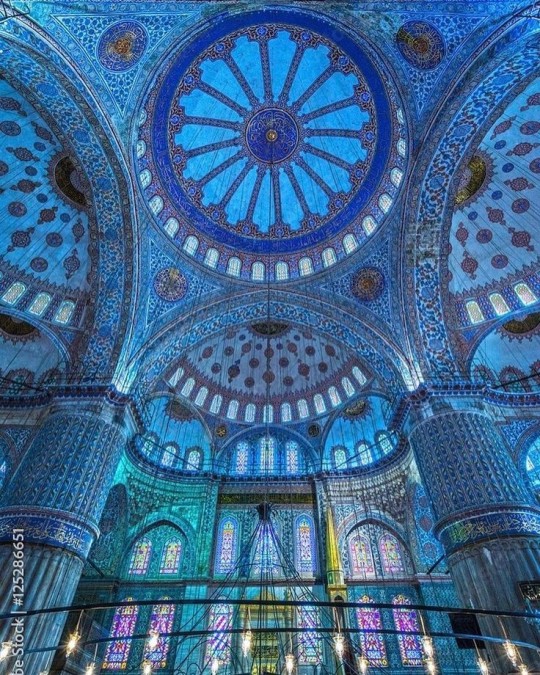
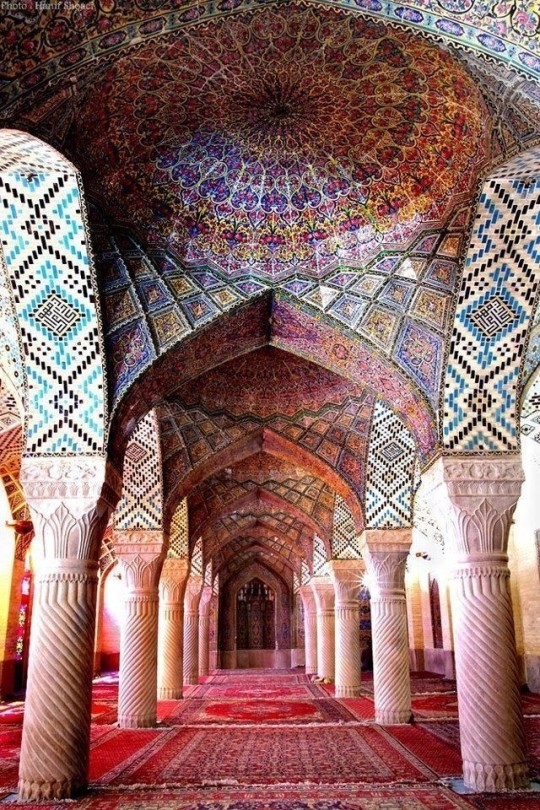
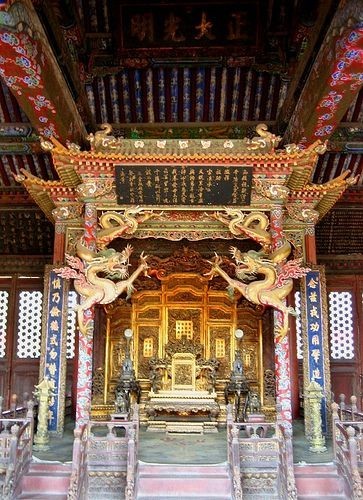
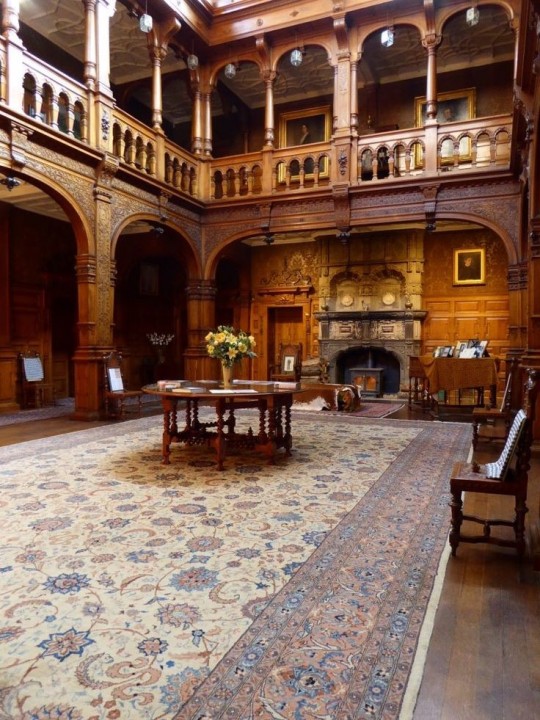
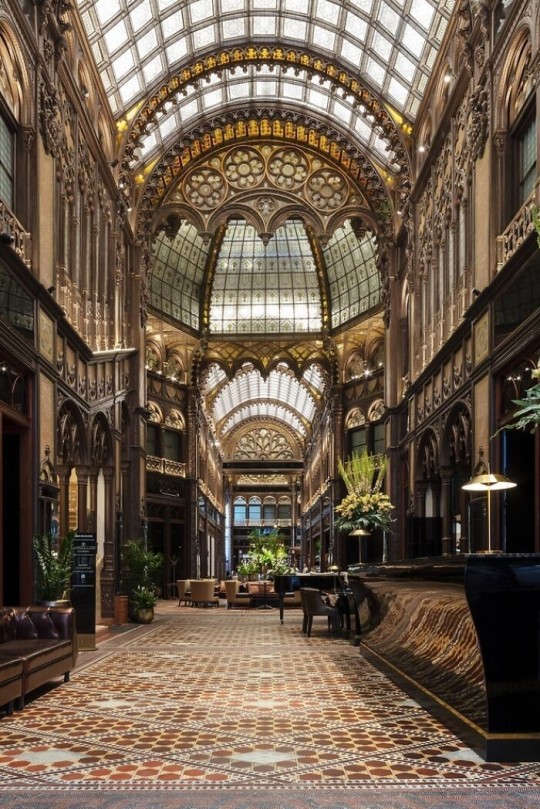
As a followup to the very popular post on architecture, I decided to add onto it by exploring the interior of each movement and the different design techniques and tastes of each era. This post at be helpful for historical fiction, fantasy or just a long read when you're bored.
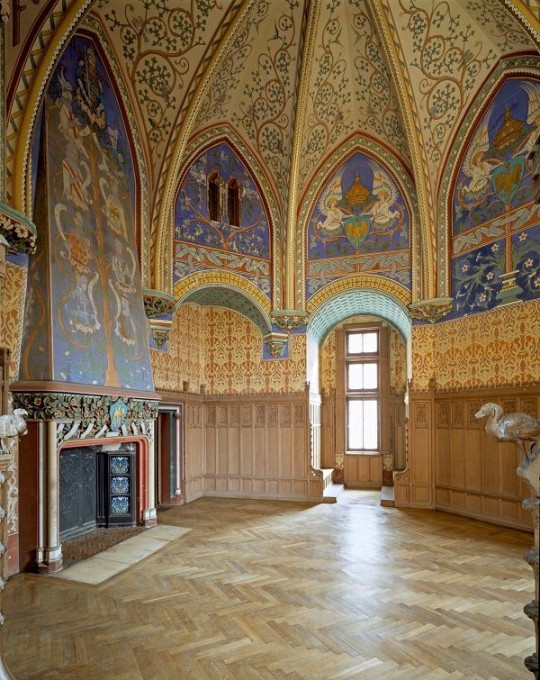
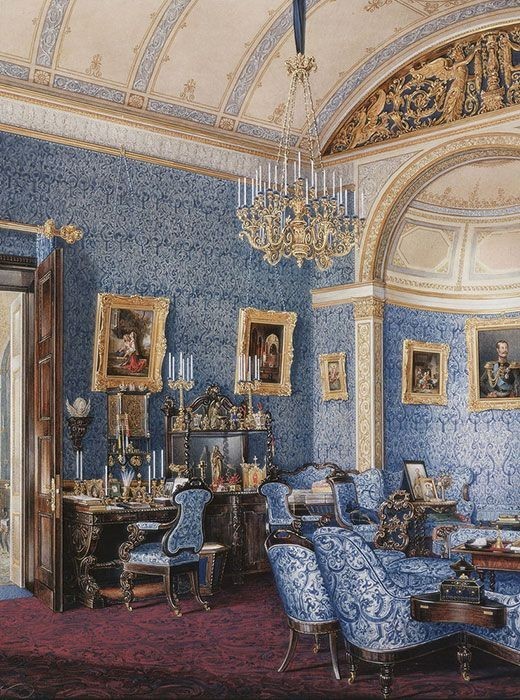
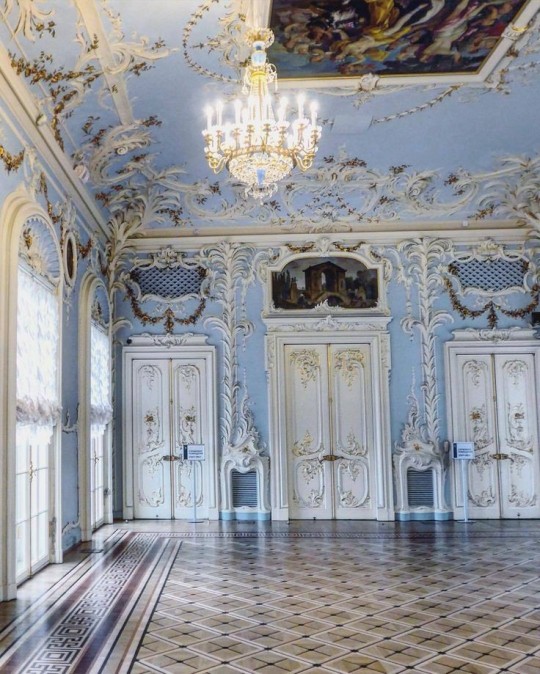
Interior Design Terms
Reeding and fluting: Fluting is a technique that consists a continuous pattern of concave grooves in a flat surface across a surface. Reeding is it's opposite.
Embossing: stamping, carving or moulding a symbol to make it stand out on a surface.
Paneling: Panels of carved wood or fabric a fixed to a wall in a continuous pattern.
Gilding: the use of gold to highlight features.
Glazed Tile: Ceramic or porcelain tiles coated with liquid coloured glass or enamel.
Column: A column is a pillar of stone or wood built to support a ceiling. We will see more of columns later on.
Bay Window: The Bay Window is a window projecting outward from a building.
Frescos: A design element of painting images upon wet plaster.
Mosaic: Mosaics are a design element that involves using pieces of coloured glass and fitted them together upon the floor or wall to form images.
Mouldings: ornate strips of carved wood along the top of a wall.
Wainscoting: paneling along the lower portion of a wall.
Chinoiserie: A European take on East Asian art. Usually seen in wallpaper.
Clerestory: A series of eye-level windows.
Sconces: A light fixture supported on a wall.
Niche: A sunken area within a wall.
Monochromatic: Focusing on a single colour within a scheme.
Ceiling rose: A moulding fashioned on the ceiling in the shape of a rose usually supporting a light fixture.
Baluster: the vertical bars of a railing.
Façade: front portion of a building
Lintel: Top of a door or window.
Portico: a covered structure over a door supported by columns
Eaves: the part of the roof overhanging from the building
Skirting: border around lower length of a wall
Ancient Greece
Houses were made of either sun-dried clay bricks or stone which were painted when they dried. Ground floors were decorated with coloured stones and tiles called Mosaics. Upper level floors were made from wood. Homes were furnished with tapestries and furniture, and in grand homes statues and grand altars would be found. Furniture was very skillfully crafted in Ancient Greece, much attention was paid to the carving and decoration of such things. Of course, Ancient Greece is ancient so I won't be going through all the movements but I will talk a little about columns.
Doric: Doric is the oldest of the orders and some argue it is the simplest. The columns of this style are set close together, without bases and carved with concave curves called flutes. The capitals (the top of the column) are plain often built with a curve at the base called an echinus and are topped by a square at the apex called an abacus. The entablature is marked by frieze of vertical channels/triglyphs. In between the channels would be detail of carved marble. The Parthenon in Athens is your best example of Doric architecture.
Ionic: The Ionic style was used for smaller buildings and the interiors. The columns had twin volutes, scroll-like designs on its capital. Between these scrolls, there was a carved curve known as an egg and in this style the entablature is much narrower and the frieze is thick with carvings. The example of Ionic Architecture is the Temple to Athena Nike at the Athens Acropolis.
Corinthian: The Corinthian style has some similarities with the Ionic order, the bases, entablature and columns almost the same but the capital is more ornate its base, column, and entablature, but its capital is far more ornate, commonly carved with depictions of acanthus leaves. The style was more slender than the others on this list, used less for bearing weight but more for decoration. Corinthian style can be found along the top levels of the Colosseum in Rome.
Tuscan: The Tuscan order shares much with the Doric order, but the columns are un-fluted and smooth. The entablature is far simpler, formed without triglyphs or guttae. The columns are capped with round capitals.
Composite: This style is mixed. It features the volutes of the Ionic order and the capitals of the Corinthian order. The volutes are larger in these columns and often more ornate. The column's capital is rather plain. for the capital, with no consistent differences to that above or below the capital.
Ancient Rome
Rome is well known for its outward architectural styles. However the Romans did know how to add that rizz to the interior. Ceilings were either vaulted or made from exploded beams that could be painted. The Romans were big into design. Moasics were a common interior sight, the use of little pieces of coloured glass or stone to create a larger image. Frescoes were used to add colour to the home, depicting mythical figures and beasts and also different textures such as stonework or brick. The Romans loved their furniture. Dining tables were low and the Romans ate on couches. Weaving was a popular pastime so there would be tapestries and wall hangings in the house. Rich households could even afford to import fine rugs from across the Empire. Glass was also a feature in Roman interior but windows were usually not paned as large panes were hard to make. Doors were usually treated with panels that were carved or in lain with bronze.
Ancient Egypt
Egypt was one of the first great civilisations, known for its immense and grand structures. Wealthy Egyptians had grand homes. The walls were painted or plastered usually with bright colours and hues. The Egyptians are cool because they mapped out their buildings in such a way to adhere to astrological movements meaning on special days if the calendar the temple or monuments were in the right place always. The columns of Egyptian where thicker, more bulbous and often had capitals shaped like bundles of papyrus reeds. Woven mats and tapestries were popular decor. Motifs from the river such as palms, papyrus and reeds were popular symbols used.
Ancient Africa
African Architecture is a very mixed bag and more structurally different and impressive than Hollywood would have you believe. Far beyond the common depictions of primitive buildings, the African nations were among the giants of their time in architecture, no style quite the same as the last but just as breathtaking.
Rwandan Architecture: The Rwandans commonly built of hardened clay with thatched roofs of dried grass or reeds. Mats of woven reeds carpeted the floors of royal abodes. These residences folded about a large public area known as a karubanda and were often so large that they became almost like a maze, connecting different chambers/huts of all kinds of uses be they residential or for other purposes.
Ashanti Architecture: The Ashanti style can be found in present day Ghana. The style incorporates walls of plaster formed of mud and designed with bright paint and buildings with a courtyard at the heart, not unlike another examples on this post. The Ashanti also formed their buildings of the favourite method of wattle and daub.
Nubian Architecture: Nubia, in modern day Ethiopia, was home to the Nubians who were one of the world's most impressive architects at the beginning of the architecture world and probably would be more talked about if it weren't for the Egyptians building monuments only up the road. The Nubians were famous for building the speos, tall tower-like spires carved of stone. The Nubians used a variety of materials and skills to build, for example wattle and daub and mudbrick. The Kingdom of Kush, the people who took over the Nubian Empire was a fan of Egyptian works even if they didn't like them very much. The Kushites began building pyramid-like structures such at the sight of Gebel Barkal
Japanese Interiors
Japenese interior design rests upon 7 principles. Kanso (簡素)- Simplicity, Fukinsei (不均整)- Asymmetry, Shizen (自然)- Natural, Shibumi (渋味) – Simple beauty, Yugen (幽玄)- subtle grace, Datsuzoku (脱俗) – freedom from habitual behaviour, Seijaku (静寂)- tranquillity.
Common features of Japanese Interior Design:
Shoji walls: these are the screens you think of when you think of the traditional Japanese homes. They are made of wooden frames, rice paper and used to partition
Tatami: Tatami mats are used within Japanese households to blanket the floors. They were made of rice straw and rush straw, laid down to cushion the floor.
Genkan: The Genkan was a sunken space between the front door and the rest of the house. This area is meant to separate the home from the outside and is where shoes are discarded before entering.
Japanese furniture: often lowest, close to the ground. These include tables and chairs but often tanked are replaced by zabuton, large cushions. Furniture is usually carved of wood in a minimalist design.
Nature: As both the Shinto and Buddhist beliefs are great influences upon architecture, there is a strong presence of nature with the architecture. Wood is used for this reason and natural light is prevalent with in the home. The orientation is meant to reflect the best view of the world.
Islamic World Interior
The Islamic world has one of the most beautiful and impressive interior design styles across the world. Colour and detail are absolute staples in the movement. Windows are usually not paned with glass but covered in ornate lattices known as jali. The jali give ventilation, light and privacy to the home. Islamic Interiors are ornate and colourful, using coloured ceramic tiles. The upper parts of walls and ceilings are usually flat decorated with arabesques (foliate ornamentation), while the lower wall areas were usually tiled. Features such as honeycombed ceilings, horseshoe arches, stalactite-fringed arches and stalactite vaults (Muqarnas) are prevalent among many famous Islamic buildings such as the Alhambra and the Blue Mosque.
Byzantine (330/395–1453 A. D)
The Byzantine Empire or Eastern Roman Empire was where eat met west, leading to a melting pot of different interior designs based on early Christian styles and Persian influences. Mosaics are probably what you think of when you think of the Byzantine Empire. Ivory was also a popular feature in the Interiors, with carved ivory or the use of it in inlay. The use of gold as a decorative feature usually by way of repoussé (decorating metals by hammering in the design from the backside of the metal). Fabrics from Persia, heavily embroidered and intricately woven along with silks from afar a field as China, would also be used to upholster furniture or be used as wall hangings. The Byzantines favoured natural light, usually from the use of copolas.
Indian Interiors
India is of course, the font of all intricate designs. India's history is sectioned into many eras but we will focus on a few to give you an idea of prevalent techniques and tastes.
The Gupta Empire (320 – 650 CE): The Gupta era was a time of stone carving. As impressive as the outside of these buildings are, the Interiors are just as amazing. Gupta era buildings featured many details such as ogee (circular or horseshoe arch), gavaksha/chandrashala (the motif centred these arches), ashlar masonry (built of squared stone blocks) with ceilings of plain, flat slabs of stone.
Delhi Sultanate (1206–1526): Another period of beautifully carved stone. The Delhi sultanate had influence from the Islamic world, with heavy uses of mosaics, brackets, intricate mouldings, columns and and hypostyle halls.
Mughal Empire (1526–1857): Stonework was also important on the Mughal Empire. Intricately carved stonework was seen in the pillars, low relief panels depicting nature images and jalis (marble screens). Stonework was also decorated in a stye known as pietra dura/parchin kari with inscriptions and geometric designs using colored stones to create images. Tilework was also popular during this period. Moasic tiles were cut and fitted together to create larger patters while cuerda seca tiles were coloured tiles outlined with black.
Chinese Interiors
Common features of Chinese Interiors
Use of Colours: Colour in Chinese Interior is usually vibrant and bold. Red and Black are are traditional colours, meant to bring luck, happiness, power, knowledge and stability to the household.
Latticework: Lattices are a staple in Chinese interiors most often seen on shutters, screens, doors of cabinets snf even traditional beds.
Lacquer: Multiple coats of lacquer are applied to furniture or cabinets (now walls) and then carved. The skill is called Diaoqi (雕漆).
Decorative Screens: Screens are used to partition off part of a room. They are usually of carved wood, pained with very intricate murals.
Shrines: Spaces were reserved on the home to honour ancestors, usually consisting of an altar where offerings could be made.
Of course, Chinese Interiors are not all the same through the different eras. While some details and techniques were interchangeable through different dynasties, usually a dynasty had a notable style or deviation. These aren't all the dynasties of course but a few interesting examples.
Song Dynasty (960–1279): The Song Dynasty is known for its stonework. Sculpture was an important part of Song Dynasty interior. It was in this period than brick and stone work became the most used material. The Song Dynasty was also known for its very intricate attention to detail, paintings, and used tiles.
Ming Dynasty(1368–1644): Ceilings were adorned with cloisons usually featuring yellow reed work. The floors would be of flagstones usually of deep tones, mostly black. The Ming Dynasty favoured richly coloured silk hangings, tapestries and furnishings. Furniture was usually carved of darker woods, arrayed in a certain way to bring peace to the dwelling.
Han Dynasty (206 BC-220 AD): Interior walls were plastered and painted to show important figures and scenes. Lacquer, though it was discovered earlier, came into greater prominence with better skill in this era.
Tang Dynasty (618–907) : The colour palette is restrained, reserved. But the Tang dynasty is not without it's beauty. Earthenware reached it's peak in this era, many homes would display fine examples as well. The Tang dynasty is famous for its upturned eaves, the ceilings supported by timber columns mounted with metal or stone bases. Glazed tiles were popular in this era, either a fixed to the roof or decorating a screen wall.
Romanesque (6th -11th century/12th)
Romanesque Architecture is a span between the end of Roman Empire to the Gothic style. Taking inspiration from the Roman and Byzantine Empires, the Romanesque period incorporates many of the styles. The most common details are carved floral and foliage symbols with the stonework of the Romanesque buildings. Cable mouldings or twisted rope-like carvings would have framed doorways. As per the name, Romansque Interiors relied heavily on its love and admiration for Rome. The Romanesque style uses geometric shapes as statements using curves, circles snf arches. The colours would be clean and warm, focusing on minimal ornamentation.
Gothic Architecture (12th Century - 16th Century)
The Gothic style is what you think of when you think of old European cathedrals and probably one of the beautiful of the styles on this list and one of most recognisable. The Gothic style is a dramatic, opposing sight and one of the easiest to describe. Decoration in this era became more ornate, stonework began to sport carving and modelling in a way it did not before. The ceilings moved away from barreled vaults to quadripartite and sexpartite vaulting. Columns slimmed as other supportive structures were invented. Intricate stained glass windows began their popularity here. In Gothic structures, everything is very symmetrical and even.
Mediaeval (500 AD to 1500)
Interiors of mediaeval homes are not quite as drab as Hollywood likes to make out. Building materials may be hidden by plaster in rich homes, sometimes even painted. Floors were either dirt strewn with rushes or flagstones in larger homes. Stonework was popular, especially around fireplaces. Grand homes would be decorated with intricate woodwork, carved heraldic beasts and wall hangings of fine fabrics.
Renaissance (late 1300s-1600s)
The Renaissance was a period of great artistry and splendor. The revival of old styles injected symmetry and colour into the homes. Frescoes were back. Painted mouldings adorned the ceilings and walls. Furniture became more ornate, fixed with luxurious upholstery and fine carvings. Caryatids (pillars in the shape of women), grotesques, Roman and Greek images were used to spruce up the place. Floors began to become more intricate, with coloured stone and marble. Modelled stucco, sgraffiti arabesques (made by cutting lines through a layer of plaster or stucco to reveal an underlayer), and fine wall painting were used in brilliant combinations in the early part of the 16th century.
Tudor Interior (1485-1603)
The Tudor period is a starkly unique style within England and very recognisable. Windows were fixed with lattice work, usually casement. Stained glass was also in in this period, usually depicting figures and heraldic beasts. Rooms would be panelled with wood or plastered. Walls would be adorned with tapestries or embroidered hangings. Windows and furniture would be furnished with fine fabrics such as brocade. Floors would typically be of wood, sometimes strewn with rush matting mixed with fresh herbs and flowers to freshen the room.
Baroque (1600 to 1750)
The Baroque period was a time for splendor and for splashing the cash. The interior of a baroque room was usually intricate, usually of a light palette, featuring a very high ceiling heavy with detail. Furniture would choke the room, ornately carved and stitched with very high quality fabrics. The rooms would be full of art not limited to just paintings but also sculptures of marble or bronze, large intricate mirrors, moldings along the walls which may be heavily gilded, chandeliers and detailed paneling.
Victorian (1837-1901)
We think of the interiors of Victorian homes as dowdy and dark but that isn't true. The Victorians favoured tapestries, intricate rugs, decorated wallpaper, exquisitely furniture, and surprisingly, bright colour. Dyes were more widely available to people of all stations and the Victorians did not want for colour. Patterns and details were usually nature inspired, usually floral or vines. Walls could also be painted to mimic a building material such as wood or marble and most likely painted in rich tones. The Victorians were suckers for furniture, preferring them grandly carved with fine fabric usually embroidered or buttoned. And they did not believe in minimalism. If you could fit another piece of furniture in a room, it was going in there. Floors were almost eclusively wood laid with the previously mentioned rugs. But the Victorians did enjoy tiled floors but restricted them to entrances. The Victorians were quite in touch with their green thumbs so expect a lot of flowers and greenery inside. with various elaborately decorated patterned rugs. And remember, the Victorians loved to display as much wealth as they could. Every shelf, cabinet, case and ledge would be chocked full of ornaments and antiques.
Edwardian/The Gilded Age/Belle Epoque (1880s-1914)
This period (I've lumped them together for simplicity) began to move away from the deep tones and ornate patterns of the Victorian period. Colour became more neutral. Nature still had a place in design. Stained glass began to become popular, especially on lampshades and light fixtures. Embossing started to gain popularity and tile work began to expand from the entrance halls to other parts of the house. Furniture began to move away from dark wood, some families favouring breathable woods like wicker. The rooms would be less cluttered.
Art Deco (1920s-1930s)
The 1920s was a time of buzz and change. Gone were the refined tastes of the pre-war era and now the wow factor was in. Walls were smoother, buildings were sharper and more jagged, doorways and windows were decorated with reeding and fluting. Pastels were in, as was the heavy use of black and white, along with gold. Mirrors and glass were in, injecting light into rooms. Gold, silver, steel and chrome were used in furnishings and decor. Geometric shapes were a favourite design choice. Again, high quality and bold fabrics were used such as animal skins or colourful velvet. It was all a rejection of the Art Noveau movement, away from nature focusing on the man made.
Modernism (1930 - 1965)
Modernism came after the Art Deco movement. Fuss and feathers were out the door and now, practicality was in. Materials used are shown as they are, wood is not painted, metal is not coated. Bright colours were acceptable but neutral palettes were favoured. Interiors were open and favoured large windows. Furniture was practical, for use rather than the ornamentation, featuring plain details of any and geometric shapes. Away from Art Deco, everything is straight, linear and streamlined.
#This took forever#I'm very tired#But enjoy#I covered as much as I could find#Fantasy Guide to interiors#interior design#Architecture#writings#writing resources#Writing reference#Writing advice#Writer's research#writing research#Writer's rescources#Writing help#Mediaeval#Renaissance#Chinese Interiors#Japanese Interiors#Indian interiors#writing#writeblr#writing reference#writing advice#writer#spilled words#writers
5K notes
·
View notes
Text







The penultimate part of my story, The House of Glass. Tintin's investigation hits a wall. Follows directly from this!
If you're enjoying this comic, please consider donating to Eyad, he is a father of four trying to evacuate his family from the Gaza strip. His wife Amal, and their kids, Sami (11), Mohammad (9), Sarah (7) and Saad (5) are currently in a displacement school in the Zaytoun area. Eyad has been separated from his family, and is currently living in a tent in the Dier al-Balah area.
His blog is @abosamisblog
#tintin#adventures of tintin#comic#fanart#captain haddock#archibald haddock#snowy#milou#professor calculus#cuthbert calculus#ramo nash#chang#castafiore#bianca castafiore#fang hsi ying#the house of glass#tinchang#guys i really tried to find references for ambulances and paramedics from 1930s belgium#i genuinely could only find stuff from london or the us#google is so so bad#two people from a discord server im on were super helpful with research#the closest we got was this german ambulance you see here#thank you billy and fujoshiurinal#one more part to go!
1K notes
·
View notes
Text

#click send post#sometimes the research gods are smiling down on me!!!!!!!#also every museum worker and conservator who was like ah why not lets post detail and construction shots too just bc: i am kissing you#on the mouth#No greater pain than finding the perfect reference and the museum page has like. Two photos. Slightly different front angles. Low res.#no info. date: 1850-1920 (assumed)
1K notes
·
View notes
Text
🌙💙🤍
Unique English words for writing 2:
Opiate (v.) - To dull pain the way someone would with opioids/opium
Ecdysis (n.) - Shedding of the skin in reptiles, shedding of outer cuticle/exoskeleton in arthropods and insects
Clowder (n.) - A group of cats
Polypharmacy (n.) - Simultaneous use of multiple drugs to treat one or multiple conditions.
Sempiternal (adj.) - Everlasting, unchanging
Dwale (n.) - Belladonna / nightshade
Fleet (adj.) - (Of water) to be shallow
Opulence (n.) - A lot of wealth, luxuriousness
Sibilant (adj.) - Making a hissing sound
Sozzled (adj.) - To be very drunk
Incendiary (adj.) - Designed to create conflict
Chatoyant (adj.) - Having a changing luster/shine
Cessation (n.) - The process/fact of coming to an end or being brought to an end
Eventide (n.) - The end of the day, eve
Luculent (adj.) - Brightly shimmering
#for some words there are tons of meanings so I can't add them all but yk#🌙💙🤍#yyprompts#dialogue prompt#writeblr#writing ideas#writing reference#writing#writing resources#writing research#writing related#on writing#creative writing#writerscommunity#writing advice#writing tips#rare words
733 notes
·
View notes
Text
In light of certain recent topics, I’ve been reminded of the 2017 book ‘Norse Mythology’ by Neil Gaiman. It was a nice telling of the more well-known Norse Myths, but there are LOTS of other options out there for people wanting to learn more about Norse Mythology—you don’t have to support that predator to learn about the gods.
Below is a list of some of the other resources that I’ve used. It’s not exhaustive by any measure—just what I’m familiar with and what comes to mind as I sit here at my desk at work. If anyone else has any additional recommendations, please add them to the list!
Norse Mythology for Smart People - norse-mythology.org

This was where I first started when I wanted to learn about Norse Mythology years ago—I literally just typed “Norse Mythology” into google and clicked the first result like a noob. But this site does a really good job of giving information on a wide range of topics within norse mythology as well as vikings in a general sense—everything from different gods, goddesses, creatures, places, and major stories. It’s a solid encyclopedic source that I would recommend to anyone wanting to get general information on the mythology.
“Norse Mythology: The Unofficial Guide” - https://open.spotify.com/show/7F0tD7bStFIDSVEbsnrxuI?si=8ce8f5ccf3a3417d

If podcasts are your jam, the best by far in my opinion is ‘Norse Mythology: The Unofficial Guide’. At the time of me writing this, there haven’t been any new episodes for 6 months, but there are 37 episodes that are about an hour each & range on a variety of topics from cosmology to specific deities to stories like Ragnarok or specific topics like runes. It does a fantastic job of explaining each topic in a way that is both thorough and accessible & honestly I can’t recommend it enough.
The ‘Northern Myths’ Podcast - https://open.spotify.com/show/7KtSJb5DTLSwmfj1BPYY5v?si=fcd6c297cdc1463d

If you want to go deeper into Old Norse texts like the Eddas or the Havamál, the ‘Northern Myths’ podcast is the place to go for a very deep dive/discussion on these texts. The episodes are long and sometimes get a little dry, but they do read these texts directly and then discuss each passage, so it’s a decent place to go for some deep discussion on some of the pillars of Old Norse texts.
Dr. Jackson Crawford - https://jacksonwcrawford.com/

Most people who get into Norse Mythology/History become familiar with Jackson Crawford pretty quick. He’s an expert specifically in linguistics and the Old Norse language—which includes runes—but he also has extensive knowledge on Old Norse & “Viking” history & culture. He’s previously taught at UCLA, UC Berkeley, and University of Colorado, and now has an extensive Youtube channel. He’s also been a consultant for projects like AC:Valhalla. If you have a question about Old Norse & would like to have a soft-spoken, no-nonsense cowboy in the wilds of Colorado explain it to you, this is your new home.
Again, this is by no means an exhaustive list, but it’s a good start. Please please feel free to reblog with any additional sources you’ve used so we can help new friends learn more!
#norse mythology#norse pantheon#norse history#Norse#vikings#reference#research#sources#jackson crawford#podcast#neil gaiman
956 notes
·
View notes
Text
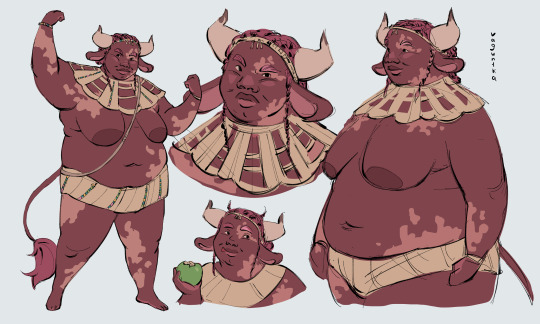


varesa's redesign and varesa&ganyu bonding sketches yay
#i know nothing about natlan so i just went with easy reference and wiki suggested that varesa was named after zulu goddess of fertility#and i watched a bit about zulu people and found it amazing how unmarried women live freely with bare chest#it became a main thing to adress in a redesign#in other things i got a bit lazy tbh... i don't want to spend to much time on research about genshin anyway...#BUT i found it rather important to depict ganyu and varesa together#ganyu might be flabbergasted by varesa's exterior and her bold nature (+her being a fat woman who is not actually ashamed of herself??)#the sketch about fruit is like... varesa assumes that ganyu needs prob same amount of fruit to feel fulfilled and just suggests her that??#ganyu accepts the offer while being a bit cautious about it (ed thing...sadly)#cw nudity#genshin impact#varesa#ganyu#varesa & ganyu#my art#redesign#fat varesa#fat ganyu#fat art
640 notes
·
View notes
Text
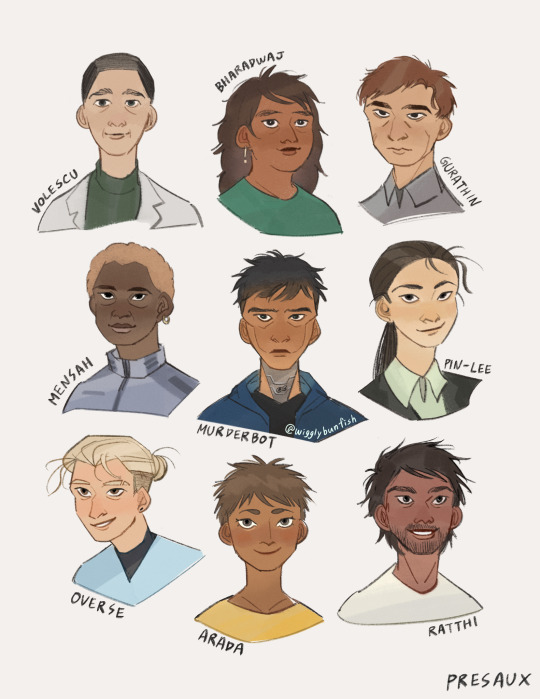
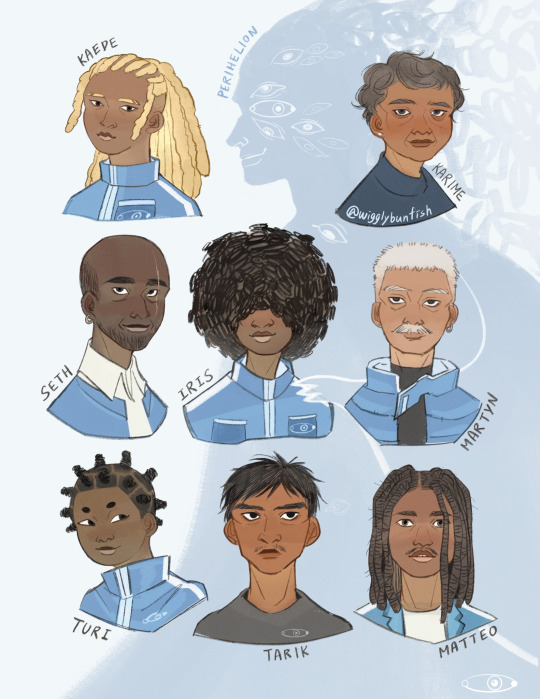
Designs for the funky humans of PreservationAux, Perihelion, + one very tired SecUnit and a monstrous Research Transport AI.
#*hollering* IT IS THEM. My bots. My hoomans. my funny little guys#everyone go read murderbot diaries this is a psa#I had so much fun finding photo references of people to match the characters and looking up all kinds of afro hairstyles#anyway. here you go.#my blood and sweat#the murderbot diaries#murderbot#perihelion#asshole research transport#illustration#character illustration#character design#(btw there's a bunfish hidden in Iris's poofy hair. u get a gold star if you spot it)#(seth and martyn have matching earrings bc i say so)#wigglybunfish
2K notes
·
View notes
Text


Draw Cow is actually a really useful spell, imho- +1d4 healing for a bonus action might not seem like a lot for the spell slot, but if you’ve taken the Divine Bovine feat, you can cast it as a cantrip. Might as well spam it every round if you can - your party will thank you!
#Bovember#cows#cow art#sketchbook#sketch#drawing#colored pencils#dnd reference I thought was really funny but will prob be incomprehensible unless you spend a lot of time researching dnd spells...#like me :x
762 notes
·
View notes
Text
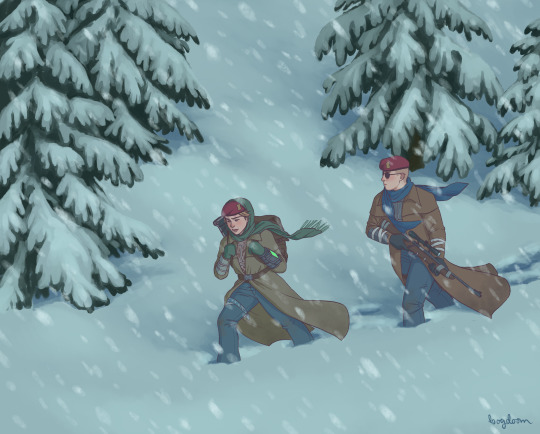
Trekking to Jacobstown
#Courier Six wants to know about the results of doctor Henry's research#Boone's ears are frozen solid but he is stubborn and will not protect them#my art#fallout new vegas#Courier Six#Craig Boone#Jacobstown#My courier is independent vegas enjoyer but wears the beret bc of Boobe#I barely used references for the poses so hopefully things are not too off
530 notes
·
View notes
Text

Ref sheet of OCs made specifically for Art Fight. I love how it turned out
[Image Description in the Alt Text and under the cut]
[Image description: A digital drawing showing 2 characters; one tall human man and one small alien-looking creature.
The man has tan skin, short wild hair, glasses, a white shirt over a green turtleneck, purple pants, and has a cane at his side. The alien creature is chubby, pink with lime-green accents, has big eyes with round eyelashes, and has a big slime blob as a tail. They are both drawn standing, holding hands.
There is text saying "The researcher + The subject", as well as "The subject's size changes depending on the weather of the environment: it gets bigger in humid environments, and smaller in dry ones."
Through the rest of the drawing are doodles, messy sketches of the two characters in various situations. End ID]
#art hack always add random pngs to your art and treat it like scrapbooking#slap a paper texture and overlay some color on that thang#my favourite thing to do. it also makes krita slower and the file heavier in 1 second ! 😁#itchyballsart#artist on tumblr#oc#original characters#oc art#they DONT have names yet and i fear they never will#they are to be referred to as “the researcher” and “the subject” only
327 notes
·
View notes